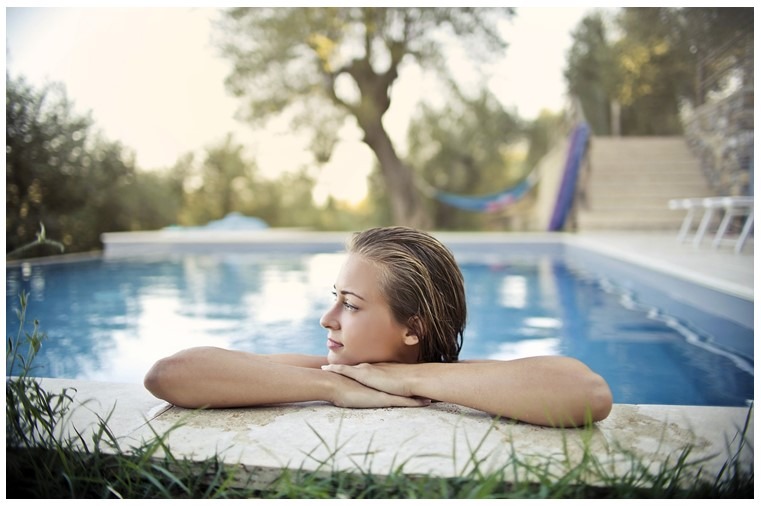Swimming pools are a great addition to any home, providing fun recreation and exercise. However, outdoor pools come with maintenance issues and safety concerns from uncovered water. Installing a pool enclosure offers many benefits that make pool ownership easier and more enjoyable.
The Main Types of Pool Enclosures
There are a few main options when looking at enclosing your pool area. Each has its own pros and cons to consider.
1. Screen Enclosures
- Screen pool enclosures use heavy-duty aluminum frames and screening material on the sides and top to allow sunlight and airflow while keeping debris out of the pool. Screens block about 75% of UV rays.
- Screens are the most affordable option for enclosing a pool but they do not provide much insulation or wind protection.
- Screens need to be replaced every few years as the material degrades in sunlight.
2. Glass Enclosures
- Glass enclosures use panels of tempered safety glass sealed in aluminum frames. This allows all sunlight through and provides a clear view outside.
- Glass blocks UV rays and provides insulation to retain heat in colder months. It also protects against strong winds.
- Glass is an excellent option in windy or colder regions but is the most expensive pool enclosure material.
3. Retractable Enclosures
- Retractable enclosures use moveable panels made from vinyl or polycarbonate that slide open or retract fully into storage boxes.
- Retractable panels provide customizable ventilation and weather protection while preserving an open feel.
- These complex systems are expensive and prone to mechanical issues from moving parts.
If you’re not sure which type of enclosure will be right for you, click on the link to learn more.
Advantages Of Pool Enclosures
1. Improved Temperature Control
Enclosing your pool allows you to comfortably enjoy swimming for more of the year. The right enclosure effectively contains heat in colder months and provides shade and cooling airflow in summer.
- Glass or acrylic panels create a greenhouse effect, trapping solar heat inside. This can raise water temperatures up to 10°F compared to an uncovered pool.
- Enclosure side walls block cold winds in winter that would normally suck heat from the water. This allows comfortable swimming even when it’s chilly outside.
- Screens or retractable panels allow windows or roof sections to open for ventilation. Letting in breezes prevents overheating on hot sunny days.
2. Lower Evaporation Rates
Pool water evaporates rapidly in dry climates and when exposed to wind. An enclosure dramatically reduces surface evaporation, saving thousands of gallons a year.
- Glass or plastic panels prevent direct airflow over the water surface, slowing evaporation. Screens reduce air movement by about 50%.
- Reduced evaporation saves on water and chemical costs over time since you’ll add less water. Less evaporation also means the pool retains heat better.
- Lower chemical consumption is better for the environment and your wallet. You’ll also waste less water from splashing and added backwashes.
3. Improved Safety
Enclosing your pool keeps out leaves, debris, and other contaminants. This leads to cleaner water and reduces risks associated with pools.
- Screens or clear panels prevent debris, dust, and bugs from blowing or falling into the pool, reducing cleaning time.
- Enclosures form a barrier between the pool and the rest of the yard. This improves safety for kids and pets, containing splashing water.
- Hard enclosures allow you to lock access doors, restricting pool entry when unattended. This prevents unsupervised swimming.
- Lighter screens won’t stop determined access but do provide a degree of safety and block most wind-blown debris.
4. Extended Swimming Season
Pool enclosures let you comfortably enjoy swimming earlier and later in the year when it would otherwise be too chilly.
- Glass or plastic enclosures trap the sun’s heat, allowing comfortable swimming even when air temps drop.
- Hard panels block cold winds that suck warmth from the pool, maintaining comfortable water temperatures.
- Retractable enclosures allow you to open the roof on warm spring days to let in sunlight and then close it up at night.
- The enclosed pool microclimate is typically comfortable for swimming for about 4 months longer than an uncovered outdoor pool.
5. Pest Protection
An enclosed pool area keeps flying and crawling pests out of the water and surrounding deck and lawn space. This saves cleaning time and makes lounging outdoors more pleasant.
- Screens form an effective barrier against bees, wasps, moths, butterflies, and other flying bugs attracted to the pool.
- Enclosing the space keeps crawling insects like ants, spiders, roaches, and earwigs out as well. These can fall into the water and die.
- Birds are also deterred from landing near the pool looking for a drink or bath. Their feathers and droppings dirty the water.
- With fewer pests around, you and your family can better enjoy cooking out or relaxing poolside without getting bugged.
